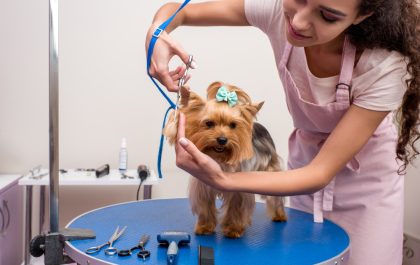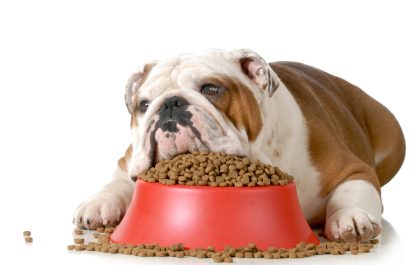If you’re an Australian cat owner, you’ll know that keeping your cat’s fur and coat in top condition is a vital part of their overall health and wellbeing. From the type of fur they have, to the best grooming techniques, there’s a lot to learn about your cat’s coat. Read on to discover the ins and outs of your cat’s fur and coat, and how to keep it looking and feeling its best.
Understanding Your Cat’s Fur Types
Cats come in a variety of fur types, each with its own unique characteristics. Understanding the different types of fur can help you better care for your cat and keep them looking their best.
The most common type of fur is short-haired, which is short and dense. This type of fur is easy to groom and doesn’t require a lot of maintenance. It’s also the most common type of fur among cats in Australia. Long-haired cats, on the other hand, have longer, softer fur that needs to be brushed regularly to prevent tangles and matting. Longhaired cats also need to be groomed more often than short-haired cats. Medium-haired cats have fur that falls somewhere in between short and long, and requires regular brushing to keep it in good condition.
No matter what type of fur your cat has, it’s important to brush it regularly to remove dirt, debris and loose fur. This will help keep your cat’s coat looking shiny and healthy, and will also help reduce shedding. Regular grooming also helps to reduce the risk of skin and coat problems, such as dandruff and allergies.
Maintaining a Healthy Coat: Grooming Tips for Cats
Maintaining a healthy coat for cats is an important part of their overall wellbeing. Regular grooming ensures that their fur is kept clean, free of mats and tangles, and that their skin is healthy and free of parasites. Here are some tips to help you keep your cat’s coat in top condition:
Brushing: Regular brushing is essential for cats with long coats, and can help to reduce the amount of hair that is shed around the house. Use a brush that is specifically designed for cats, and brush in the direction of the fur. This will help to remove any dead hair and debris, and will also help to distribute the natural oils in the fur.
Bathing: Cats do not need to be bathed frequently, but if your cat has a particularly dirty coat, then a bath may be necessary. Use a mild, cat-specific shampoo, and make sure that you rinse the fur thoroughly. After the bath, use a towel to dry the fur, and then brush it to ensure that it is tangle-free. If your cat is particularly resistant to bathing, you may want to try using a waterless shampoo instead.
Common Fur Problems in Cats and How to Treat Them
Fur problems in cats are quite common and can range from minor issues to more serious conditions. In order to keep your cat’s coat healthy and looking its best, it is important to be aware of the potential problems and how to treat them.
One of the most common fur problems in cats is matted fur. This occurs when the fur becomes tangled and knotted, making it difficult for the cat to groom itself. To prevent this from happening, it is important to brush your cat’s fur regularly and to use a detangling spray or conditioner if necessary. If the fur is already matted, it is best to have it professionally groomed to avoid causing your cat any discomfort. Another common problem is hair loss. This can be caused by a number of factors, including parasites, allergies, or skin infections. If you notice any bald patches on your cat, it is important to take them to the vet for a check-up. The vet may prescribe medication or suggest dietary changes to help treat the problem.
The Role of Nutrition in Your Cat’s Coat Health
The importance of nutrition in your cat’s coat health cannot be overstated. Cats need a balanced diet of proteins, carbohydrates, fats, minerals, vitamins, and water to maintain a healthy coat. A diet that is deficient in any of these essential components can lead to an unhealthy coat and even skin problems.
It’s important to feed your cat a diet that is specifically designed for cats. This diet should include high-quality proteins, such as chicken, fish, and turkey, as well as carbohydrates, such as rice, corn, and wheat. Fats, such as vegetable oils, should also be included in your cat’s diet. Vitamins and minerals, such as zinc, vitamin A, and vitamin E, are also essential for a healthy coat. Additionally, your cat should always have access to fresh, clean water.
By providing your cat with a balanced diet, you can ensure that their coat is healthy and well-maintained. If you have any questions about your cat’s diet, consult your local veterinarian for advice.
Seasonal Changes in Your Cat’s Fur: What to Expect
The fur of your cat can change with the seasons, and it is important to be aware of the changes that your cat may experience in order to provide the best care for them. During the winter months, cats will often grow a thicker coat of fur to help them stay warm. This coat may be more dense and may even have a slightly different colour, as the fur follicles will produce a different pigment of fur in order to keep the cat warm. During the summer months, cats will often shed their thicker winter coat in order to keep cool. This shedding process can take a few weeks, and can be quite dramatic as the cat will lose a lot of fur during this period. It is important to brush your cat regularly during this time in order to help them manage the shedding process and keep their fur in good condition.
In addition to seasonal changes in fur, cats may also experience changes in their fur due to age. As cats get older, their fur may become thinner and more sparse due to a decrease in the production of fur follicles. It is important to keep an eye on your cat’s fur and to take them to the vet if you notice any changes in their fur that may be caused by age. Additionally, it is important to provide your cat with the right diet and nutrition to ensure that their fur remains healthy and in good condition. By providing your cat with the right care, you can ensure that their fur remains healthy and well-maintained throughout the year.
The Importance of Regular Vet Check-Ups for Your Cat’s Coat
Regular vet check-ups for your cat’s coat are an important part of your cat’s overall health and wellbeing. A healthy coat indicates a healthy cat, and regular vet check-ups can help to identify any potential issues that may be present. As cats are highly independent creatures, they can often be difficult to detect any underlying problems. By having regular vet check-ups, your vet can assess your cat’s coat and identify any potential issues before they become more serious.
It is also important to keep an eye on your cat’s coat for any changes in colour, texture or pattern. Changes in the coat may be indicative of underlying health issues such as parasites, allergies, or skin infections. If you notice any changes in your cat’s coat, it is important to take them to the vet for a check-up as soon as possible. Your vet will be able to diagnose any underlying issues and provide the necessary treatment. Regular vet check-ups are essential to ensure your cat’s coat remains healthy and in good condition.
How to Keep Your Cat’s Coat Shiny and Lustrous
One of the best ways to keep your cat’s coat shiny and lustrous is to groom them regularly. Regular brushing will help to remove any dirt and debris that can accumulate on the fur, as well as help to spread natural oils throughout the coat. Additionally, a good quality shampoo should be used to keep your cat’s coat clean and healthy. If your cat has a particularly long coat, then a detangling spray may be necessary to keep the fur from becoming matted and tangled.
In addition to regular grooming, it is important to feed your cat a balanced diet that is rich in essential nutrients. This will help to keep your cat’s coat looking shiny and healthy. Omega-3 fatty acids, found in fish-based foods, are especially beneficial for maintaining a healthy coat. Additionally, adding a supplement of biotin to your cat’s diet can help to promote healthy skin and fur. Finally, make sure that your cat has access to plenty of fresh, clean water to drink. This will help to keep the fur hydrated and looking its best.
Cat Breeds with Unique Fur Characteristics and Care Requirements
The British Shorthair is one of the most popular cat breeds in the United Kingdom and is known for its unique fur characteristics. Its thick, plush coat is dense and plush, and comes in a variety of colors and patterns. The coat requires regular brushing to keep it looking its best. Additionally, the British Shorthair is prone to matting, so it should be brushed at least twice a week to prevent this from occurring.
The Maine Coon is another cat breed with unique fur characteristics. Its coat is long and silky, and comes in a variety of colors and patterns. The coat requires regular grooming to keep it looking its best. Additionally, the Maine Coon is prone to tangling and matting, so it should be brushed at least three times a week to prevent this from occurring. Additionally, the Maine Coon’s coat may need to be trimmed from time to time to keep it looking its best.
Final Thoughts
Cats come in a variety of fur types, each with its own unique characteristics. Understanding the different types of fur is important in order to better care for your cat and keep their coat looking its best. Regular brushing and combing is essential to remove dirt, debris, and loose fur, and can help to reduce shedding. Additionally, providing your cat with a balanced diet is important for their coat health, and regular vet check-ups can help to identify any underlying health issues. With the right grooming tools and techniques, you can ensure that your cat’s coat is kept in the best condition and looking its best.




